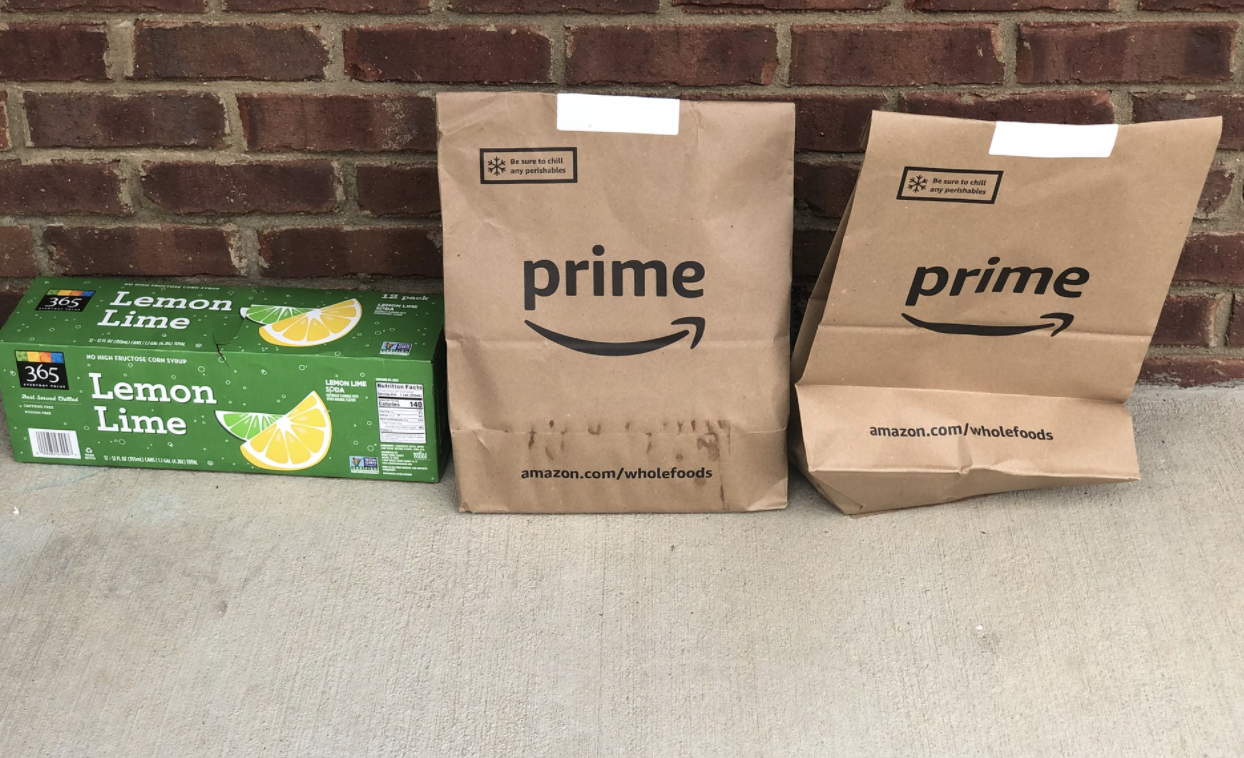Share this
How to Calculate a Winning Flat Rate Shipping Strategy for Your Ecommerce Business
by Christie McLeod on Mar. 14, 2023

In the fast-paced world of ecommerce, businesses that process high volumes of orders often face the daunting challenge of shipping. With customer expectations for fast and affordable shipping options on the rise, companies must navigate the complex and time-consuming process of calculating shipping costs for each order. However, flat rate shipping can provide a solution to this challenge. Flat rate shipping offers a set price for shipping, regardless of the size, weight, or distance of the shipment. This option simplifies the shipping process and makes it easier for businesses to manage shipping costs while providing a predictable cost for customers.
We’ve put together a comprehensive guide to flat rate shipping, outlining how to price items for flat rate shipping, examining the effectiveness of offering free shipping as a flat rate shipping option, and how to leverage flat rate shipping to increase the average order value.
Benefits of Ecommerce Flat Rate Shipping
Simplifies Shipping Process
Flat rate shipping has numerous benefits, including its ability to drive sales and increase order sizes. This is because consumers are motivated to either purchase more items due to the low shipping cost or to make larger transactions to take advantage of the “capped” shipping charge. Furthermore, the flat rate shipping model encourages customers to add more items to their cart, thereby increasing the overall value of their purchase.
Another benefit of flat rate shipping is that it can encourage customers to add more items to their cart. According to the Baymard Institute’s research, almost 70% of instances where customers abandon their shopping carts can be attributed to unforeseen shipping expenses. Many ecommerce businesses offer free shipping for orders over a certain amount, which can incentivize customers to add more items to their cart to reach that minimum spend. With flat rate shipping, the same principle applies. Customers may be more likely to add additional items to their order if they know that the shipping cost will remain the same regardless of the size or weight of the order. This can increase the average order value.
How to Price Flat Rate Shipping
Start by Calculating Your Average Shipping Cost per Order
To price flat rate shipping correctly, you should start by calculating your average shipping cost per order. You can do this by taking the total amount spent on shipping in a given month and dividing it by the number of orders for that same period. This will give you a rough estimate of your average shipping cost per order.
Round Up or Down to the Nearest Dollar
Once you have calculated the average shipping cost per order, you should round up or down to the nearest dollar to make it simple. The flat rate should cover the shipping costs for most orders, although larger orders will cost more and smaller orders will cost less.
Calculate Average Order Value (AOV)
Make sure you also calculate your average order value (AOV) to determine if you need to adjust your flat rate pricing. You should find out how many orders in a given period are above AOV and how many are below. If a few large orders are skewing the AOV higher, then you could consider lowering the flat rate to cover most of your customers’ smaller orders and offer big spenders free shipping.
Test Different Scenarios
Setting your own shipping rates offers a lot of flexibility to test different prices and scenarios to see what works best for your business. For example, you could offer different flat rate shipping options for different regions or different types of products. You could also experiment with offering free shipping on orders over a certain amount or using free shipping as a promotional lever to boost sales during slower periods.
Monitor Your Results
As you test different scenarios and implement your flat rate shipping strategy, it’s important to monitor your results. Keep track of your shipping costs, your flat rate, your AOV, and your sales. If you notice that your sales are decreasing or your shipping costs are increasing, it may be time to adjust your strategy.
Consider Fulfillment Services
Ecommerce businesses that use a Third Party Logistics Company (3PL) for fulfillment may find that their shipping costs are more consistent and predictable. They will most likely be able to lower their average shipping cost per order by storing their inventory in multiple warehouses in different locations. That way, orders can be fulfilled from the closest location, saving shipping costs.
Furthermore, by outsourcing their fulfillment to a 3PL, ecommerce businesses can benefit from a variety of other services, including inventory management, returns management, kitting and assembly, product bundling and more. These services can help businesses streamline their operations and reduce shipping costs.
Offer Free Shipping to Increase Customer Satisfaction and Drive Sales
Free shipping is also considered a method of flat rate shipping. According to Forbes, free shipping is the most popular promotion among online shoppers. Offering free shipping can also help ecommerce businesses stand out from the competition and boost their conversion rates.
Know Your Shipping Costs
It’s much easier to offer free shipping to customers when you know exactly what your shipping costs are and how much they are cutting into your profit margins. Ecommerce businesses should do their research and calculate their average shipping cost per order to ensure that they can offer free shipping without losing money.
Offer Free Shipping Over a Certain Cart Total
Businesses can also offer free shipping over a certain cart total to encourage customers to add extra products to their cart and, in turn, increase their average order value. This can be an effective way to boost sales and offer a better customer experience.
Use Free Shipping as a Promotional Lever
If free shipping isn’t sustainable year-round, businesses can use it as a promotional lever to boost sales during slower periods. For example, they could offer free shipping on orders over a certain amount during a holiday sale or to clear out older inventory at full price during a slower time of year.
Offer Free Shipping on Some Products, But Not All
Large or heavy products can be extremely expensive to ship and can cut into margins significantly. Businesses should do their research about how much each of their products costs to ship and how much their fulfillment company is charging them to make the best decision for their business. They may choose to offer free shipping on some products, but not all, to balance their costs and ensure that they’re still profitable.
Use Flat Rate Shipping to Increase Average Order Value
Brands can use flat rate shipping to increase the average order value. By offering bundle deals or discounts to encourage customers to purchase multiple items, businesses can increase the number of items in customers’ carts. For example, a brand could offer a discount on a bundle of products or offer free shipping on orders over a certain amount.
Flat rate shipping can also make it more attractive for customers to add complementary or related products to their orders. For example, if a customer is purchasing a backpack, you could promote a matching wallet or a hat as additional items that can be added to the order at no additional shipping cost. This can increase the average order value and drive more sales.
Use Flat Rate Shipping to Upsell or Cross-Sell
Flat rate shipping can make it more appealing for customers to add upsell or cross-sell items to their orders. For example, if a customer is purchasing a product that requires batteries, you could offer to include a pack of batteries at no additional shipping cost. This can increase the average order value and drive more sales.
Review All Shipping Options Before Making a Commitment
When deciding which shipping options to offer, you should review all of your options before making a commitment. Standard shipping rates are usually based on the weight and size of the package, as well as the distance it needs to travel. Express shipping involves faster delivery times than standard shipping, often with guaranteed delivery within a certain number of days. Express shipping is typically more expensive than standard shipping.
Flat rate shipping involves charging a consistent and predictable shipping price to customers, regardless of the size or weight of the order. Free shipping can be offered to customers for all orders or for orders above a certain amount. Free shipping can be a powerful marketing tool and can increase conversions, but it can also be expensive for the business to cover the cost.
International ecommerce shipping is typically based on the size and weight of the items being shipped, as well as the distance they need to travel and the mode of transportation used. Eco-friendly shipping refers to the practice of shipping goods to minimize the environmental impact of the transportation process.
Conclusion
Flat rate shipping can be an effective way for businesses to simplify their shipping process and increase sales. By charging a consistent and predictable shipping price to customers, you can save time and reduce the risk of errors in calculating shipping costs. Flat rate shipping can also encourage customers to add more items to their cart, which can increase the average order value and drive more sales for the ecommerce business.
You can price flat rate shipping by calculating the average shipping cost per order and rounding up or down to the nearest dollar. You should also consider the average order value and test different scenarios to find the best pricing strategy. Offering free shipping can be an effective way to increase customer satisfaction and drive sales, but it’s important that you know your shipping costs and can offer free shipping without losing money.
Businesses can use flat rate shipping to increase the average order value by offering bundle deals or discounts, promoting complementary or related products, and offering to upsell or cross-sell items at no additional shipping cost. Before making a commitment, you should review all of your shipping options, including standard shipping, express shipping, international shipping, eco-friendly shipping, and freight shipping, to find the best solution for your business.
Eliminate the hassle of shipping and let our team of ecommerce experts manage it for you. Get in touch with us now to discover how our fulfillment services can assist you in optimizing your flat rate shipping strategy and expanding your ecommerce business.
Share this
You May Also Like
These Related Articles

How to Set Your eCommerce Product Shipping Pricing Model?

Are Same-Day Deliveries The Future Of eCommerce Order Shipping?

Ecommerce Challenges During Peak Holiday Shipping Season
- April 2024 (7)
- March 2024 (5)
- February 2024 (5)
- January 2024 (5)
- December 2023 (4)
- November 2023 (2)
- October 2023 (5)
- September 2023 (4)
- August 2023 (2)
- July 2023 (1)
- June 2023 (4)
- May 2023 (1)
- March 2023 (2)
- February 2023 (1)
- October 2022 (1)
- September 2022 (5)
- August 2022 (4)
- July 2022 (7)
- June 2022 (4)
- May 2022 (5)
- April 2022 (7)
- March 2022 (2)
- February 2022 (1)
- January 2022 (3)
- December 2021 (2)
- November 2021 (4)
- October 2021 (2)
- September 2021 (5)
- August 2021 (4)
- July 2021 (5)
- June 2021 (4)
- May 2021 (2)
- April 2021 (3)
- March 2021 (3)
- February 2021 (3)
- January 2021 (2)
- December 2020 (4)
- November 2020 (2)
- October 2020 (4)
- September 2020 (2)
- August 2020 (1)
- July 2020 (6)
- June 2020 (5)
- May 2020 (2)
- April 2020 (2)
- March 2020 (4)
- February 2020 (1)
- December 2019 (1)
- May 2018 (1)
- March 2018 (2)
- February 2018 (3)
- January 2018 (3)
- November 2017 (3)
- July 2017 (4)
- March 2017 (3)
- February 2017 (5)
- January 2017 (3)
- December 2016 (4)
- November 2016 (6)
- October 2016 (6)
- October 2015 (1)
- September 2015 (1)
- June 2015 (3)
- May 2015 (3)
- August 2014 (1)
- July 2014 (1)
- March 2014 (1)
- February 2014 (1)